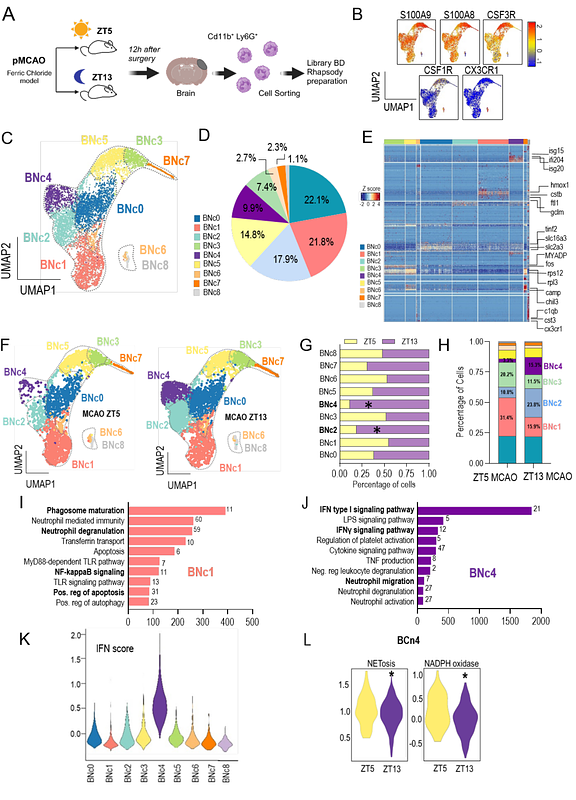CIRCADIAN MODULATION OF NEUTROPHIL FUNCTION DETERMINES COLLATERAL PERFUSION AND OUTCOME AFTER ISCHEMIC STROKE

CIRCADIAN MODULATION OF NEUTROPHIL FUNCTION DETERMINES COLLATERAL PERFUSION AND OUTCOME AFTER ISCHEMIC STROKE
Vazquez-Reyes, S.; Garcia-Culebras, A.; Di, G.; Diaz-Benito, B.; de Castro-Millan, F. J.; Ruiz-Sanchez, A.; Merino-Casamayor, E.; Parra-Perez, C.; Nieto-Vaquero, C.; Moraga, A.; Calleja, P.; Dopazo, A.; Alejano, S. C.; Rubio-Ponce, A.; Aroca-Crevillen, A.; Sanchez-Cabo, F.; El Bobakry, S. P.; Torroja, C.; Esposito, E.; Lo, E.; Ballesteros, I.; Hidalgo, A.; Cuartero, M. I.; Lizasoain, I.; Moro, M. A.
AbstractStroke is a leading cause of mortality and disability, driven by complex and time-dependent mechanisms that aggravate ischemic damage. Recent evidence indicates that infarct volumes fluctuate according to diurnal oscillations, both in mice and humans, with worse outcomes during the inactive phase of their circadian cycle. Here, we show that neutrophils are responsible for these circadian variations. By depleting neutrophils or blocking their circadian clock, differences in infarct volumes were abolished, suggesting that both the number of neutrophils and their circadian phenotype contribute to ischemic damage. Mechanistically, these differences were linked to the collateral circulation: cerebral blood flow measurements at different times after ischemia showed differential perfusion in the ipsilesional area. We found that, during the inactive mouse phase, neutrophil extracellular traps (NETs), were markedly elevated, coinciding with a reduction in ipsilesional blood flow, a higher percentage of intravascular neutrophils, and an increase in infarct volumes compared with the active phase. These findings underscore a crucial role of neutrophils, their circadian dynamics, and NET release as key drivers of ischemic damage, suggesting novel personalized therapeutic strategies based on circadian rhythms for the treatment of stroke.